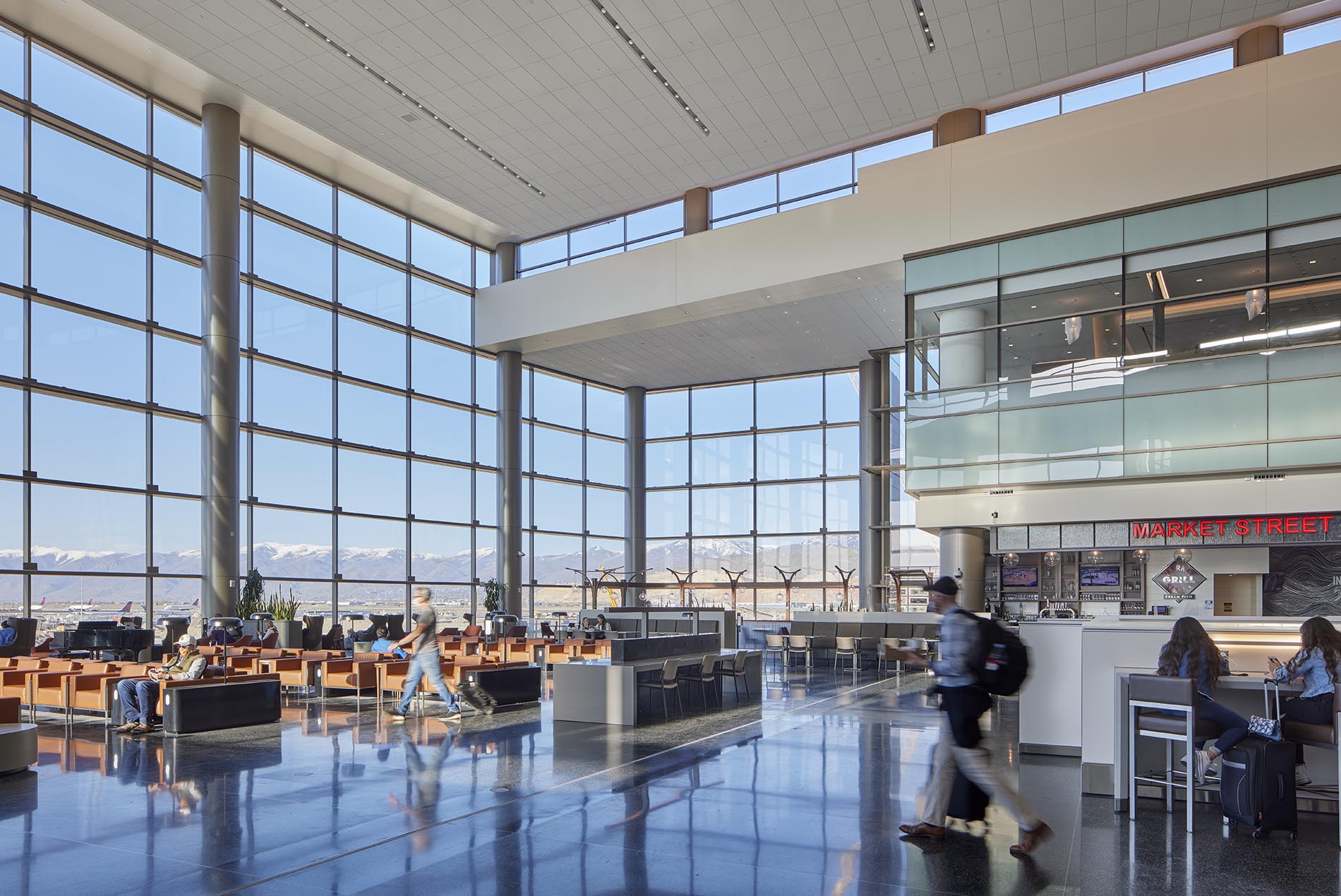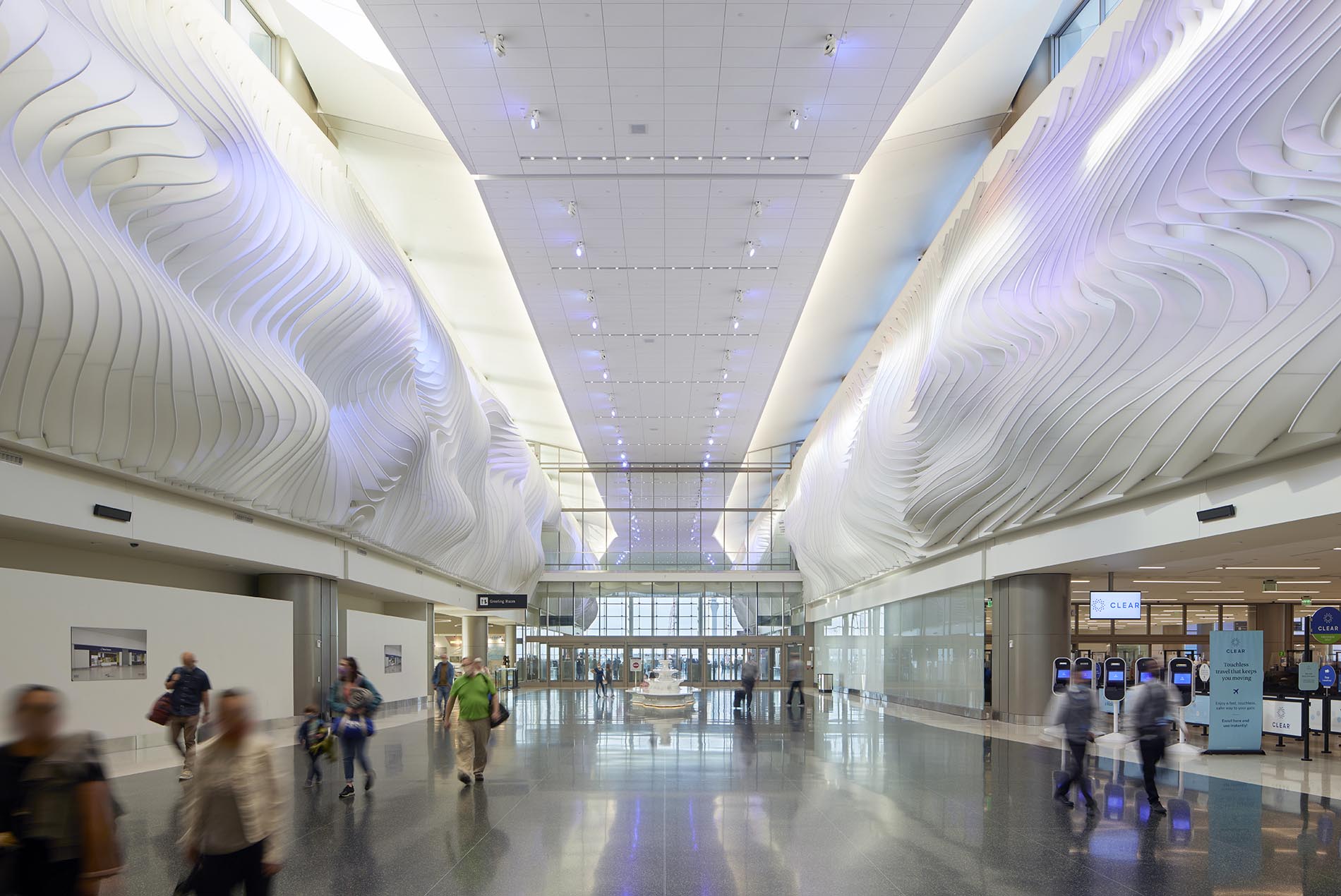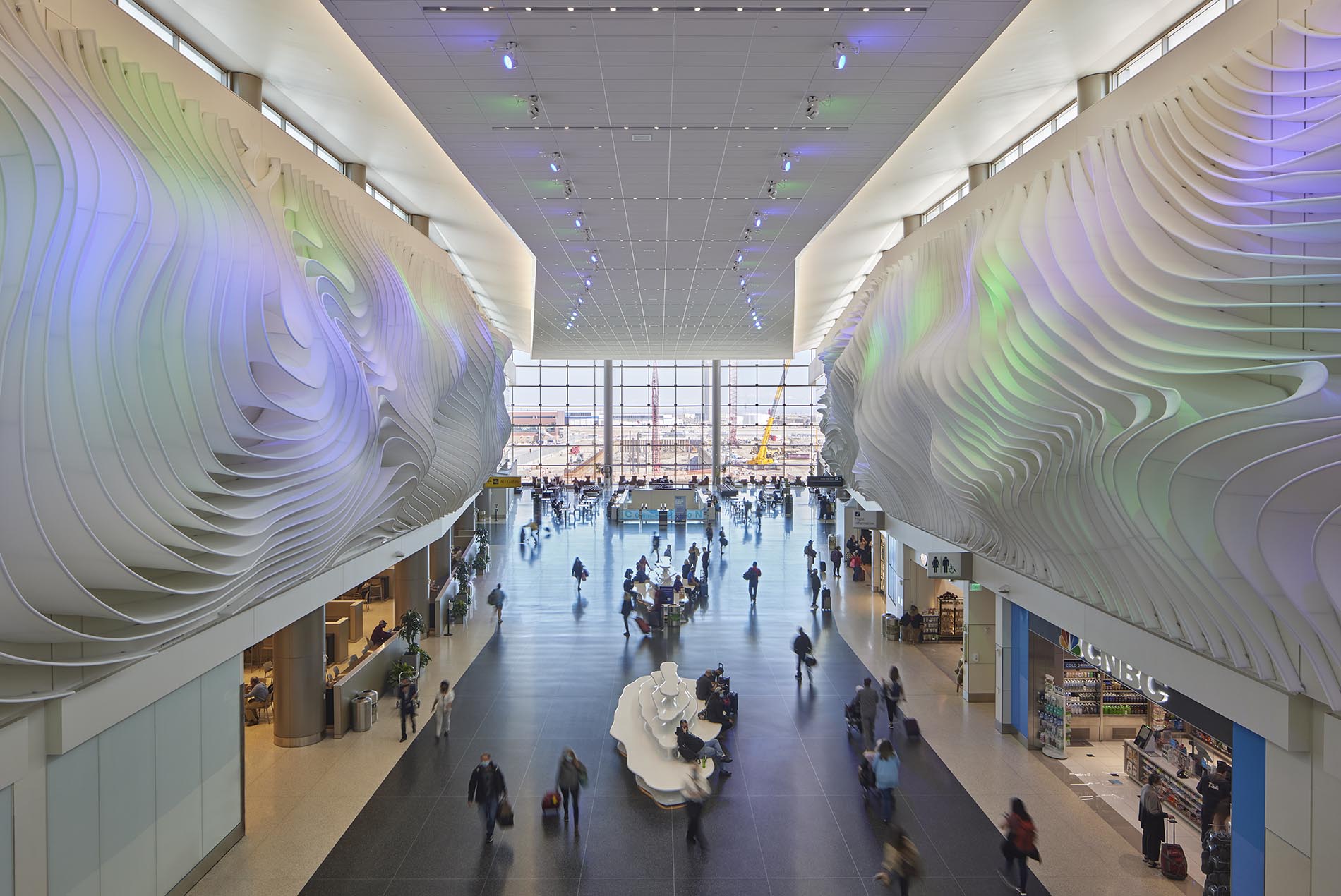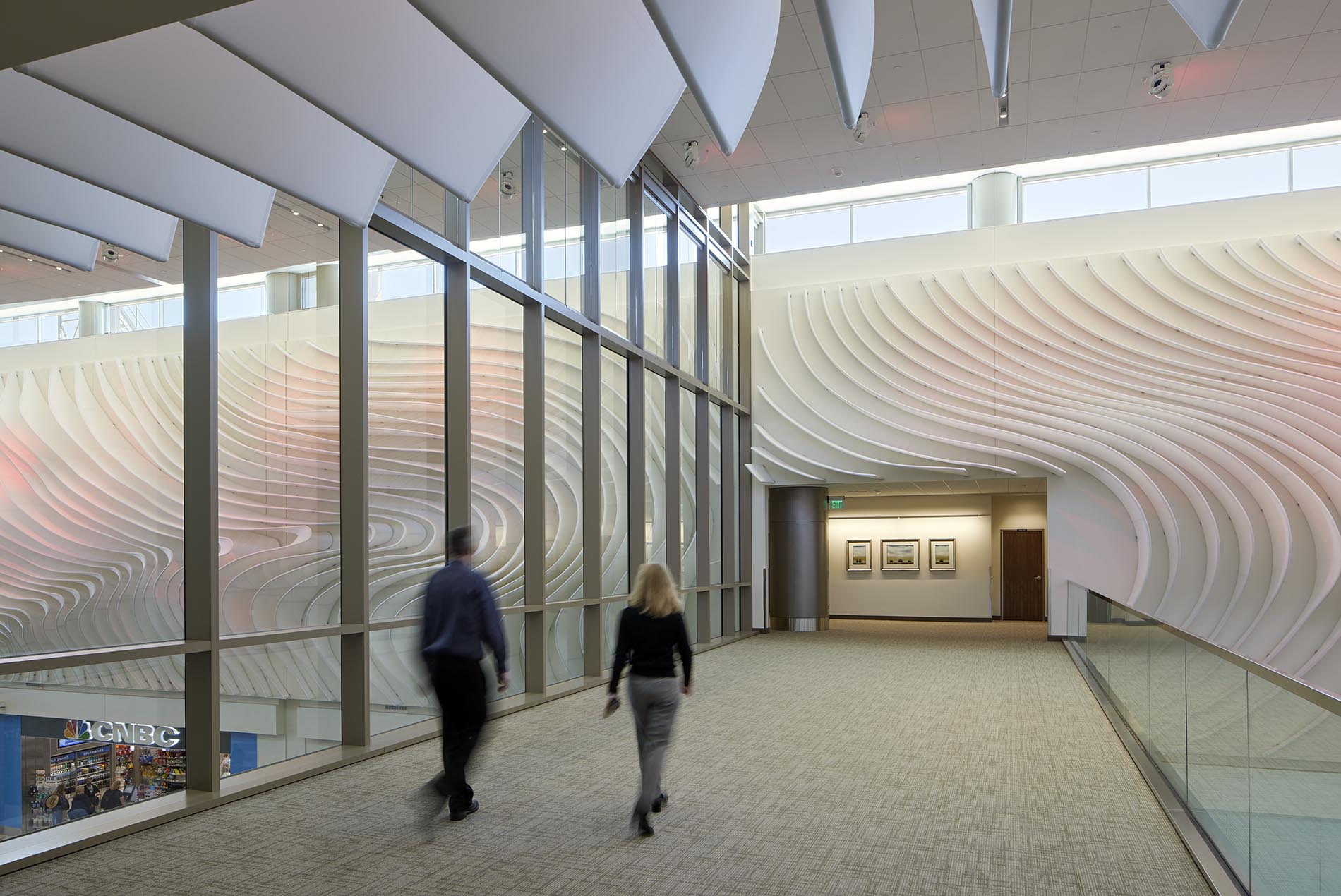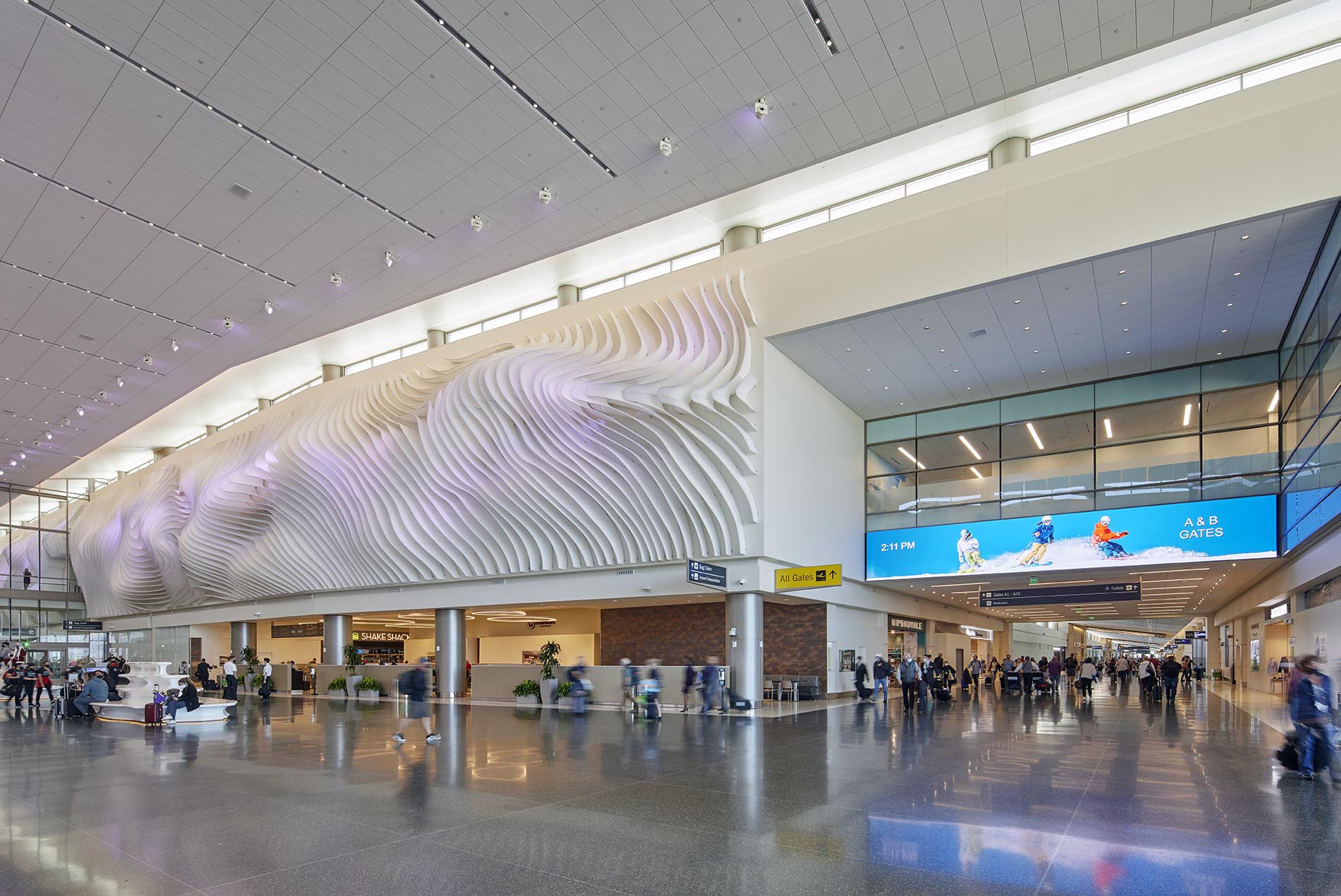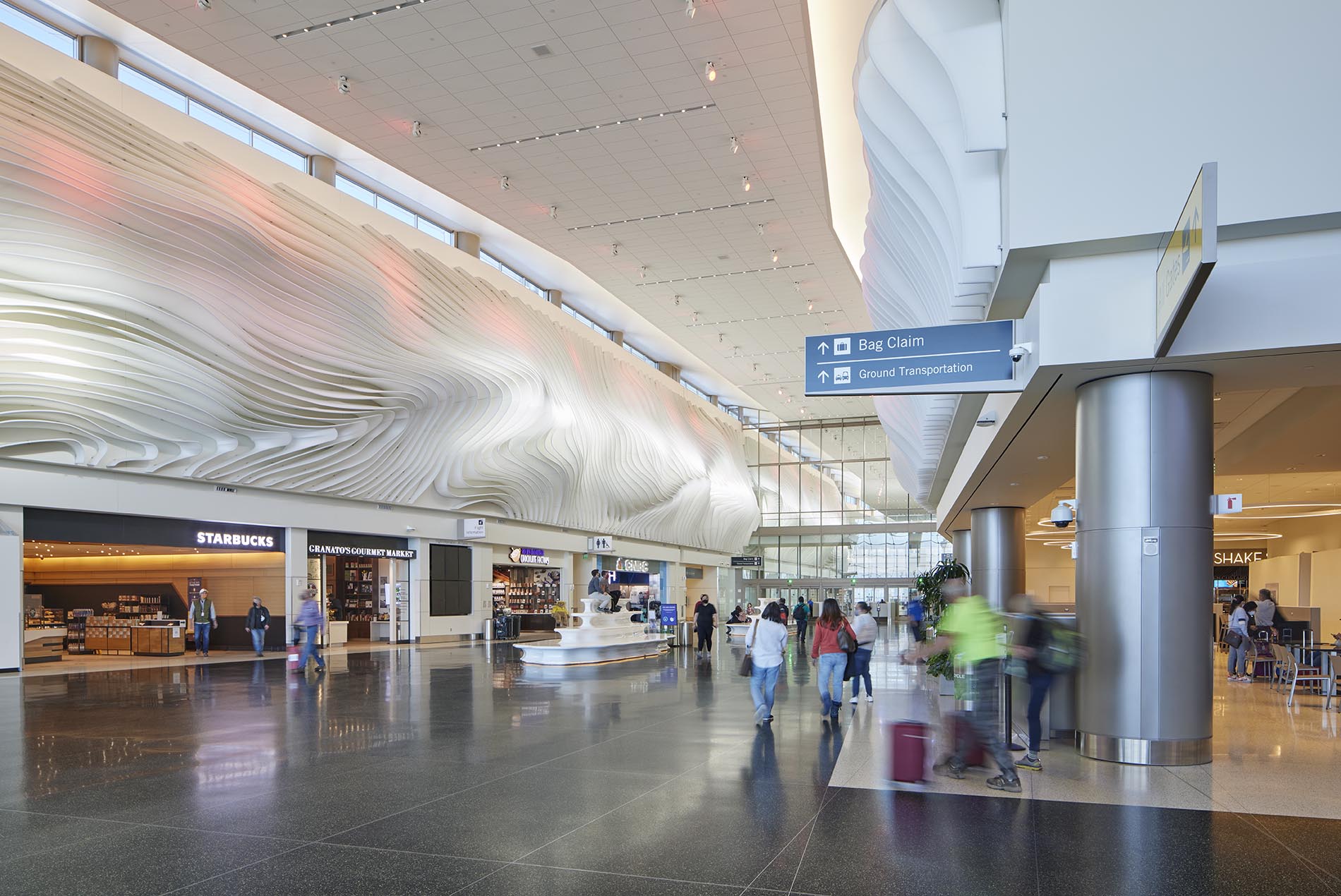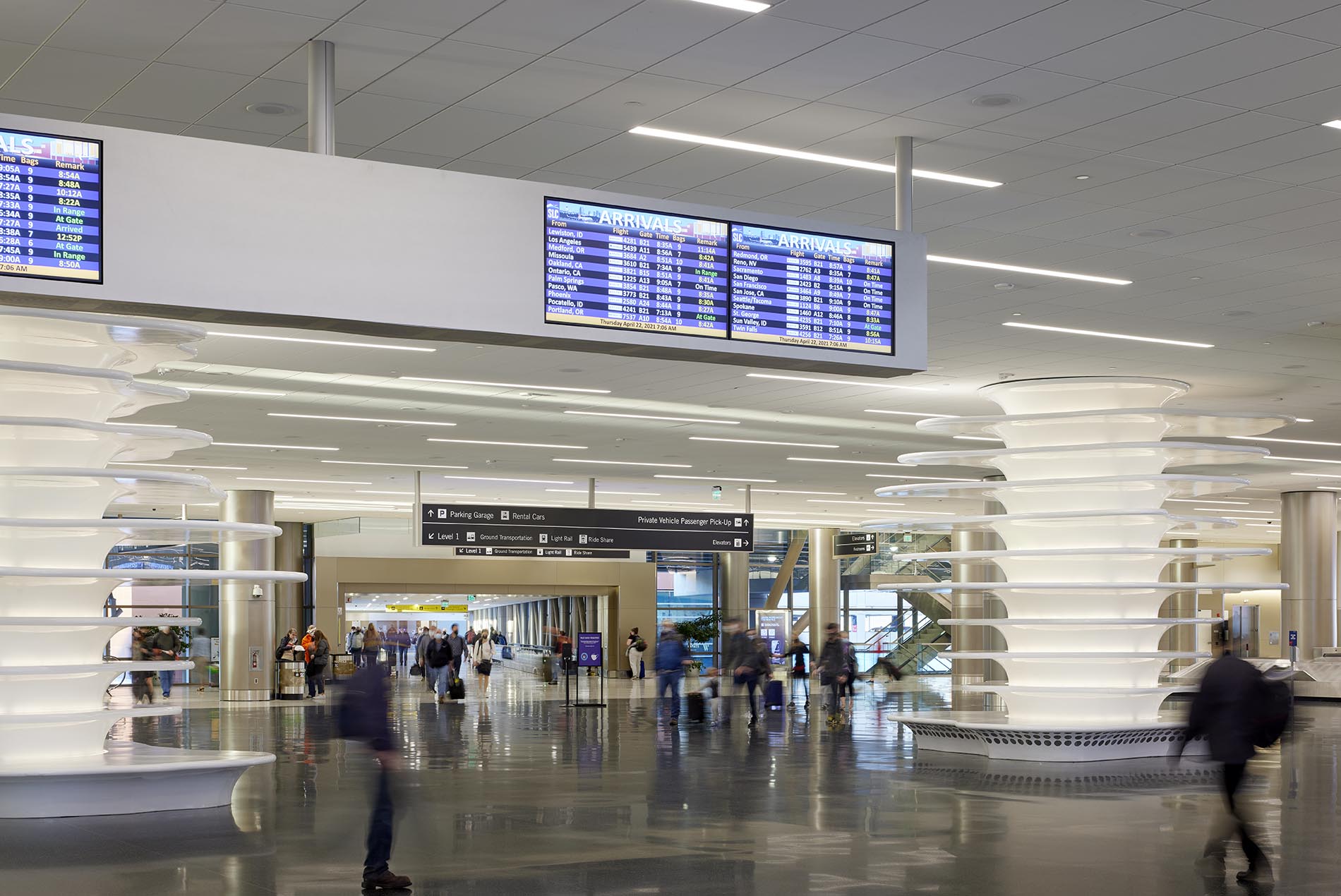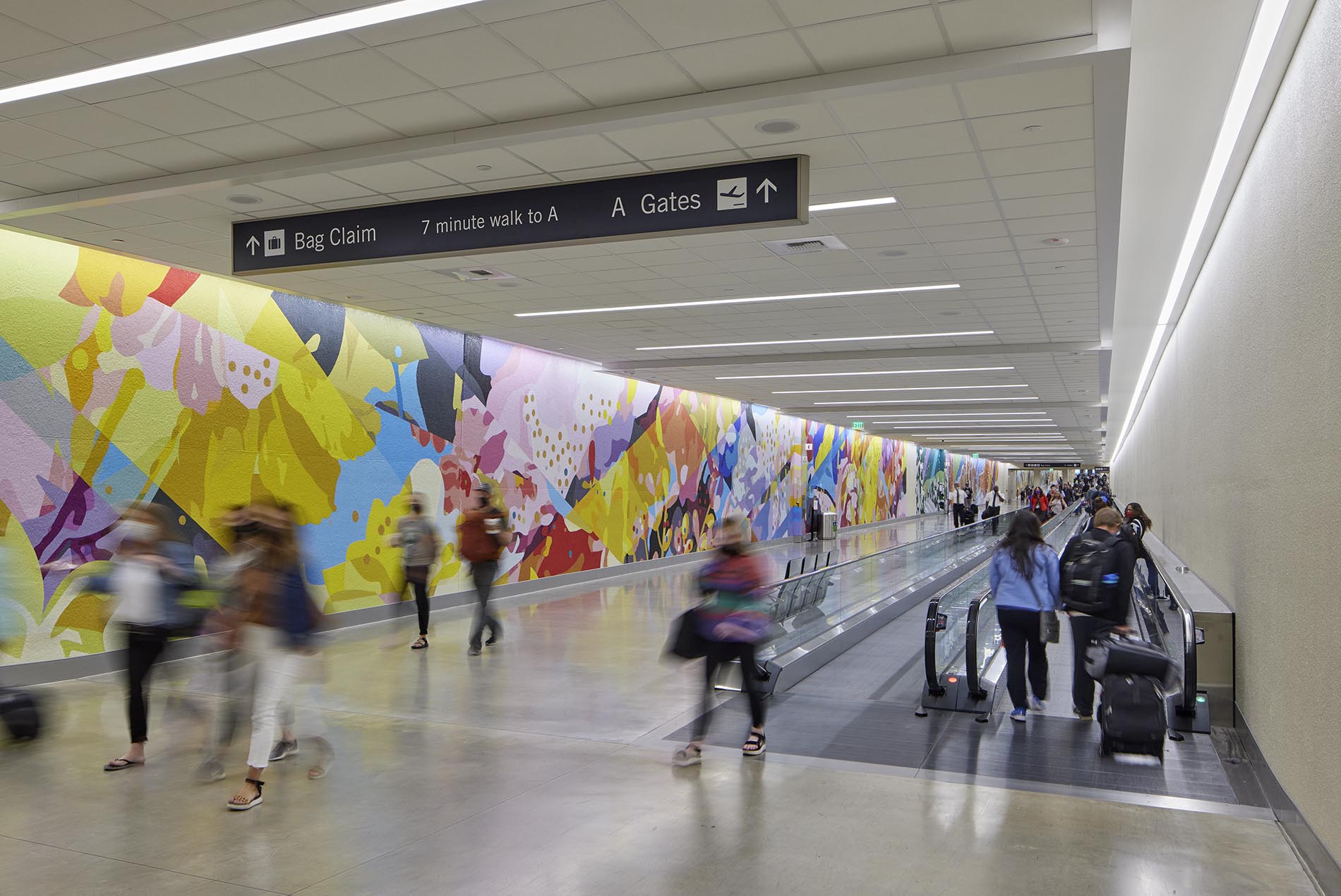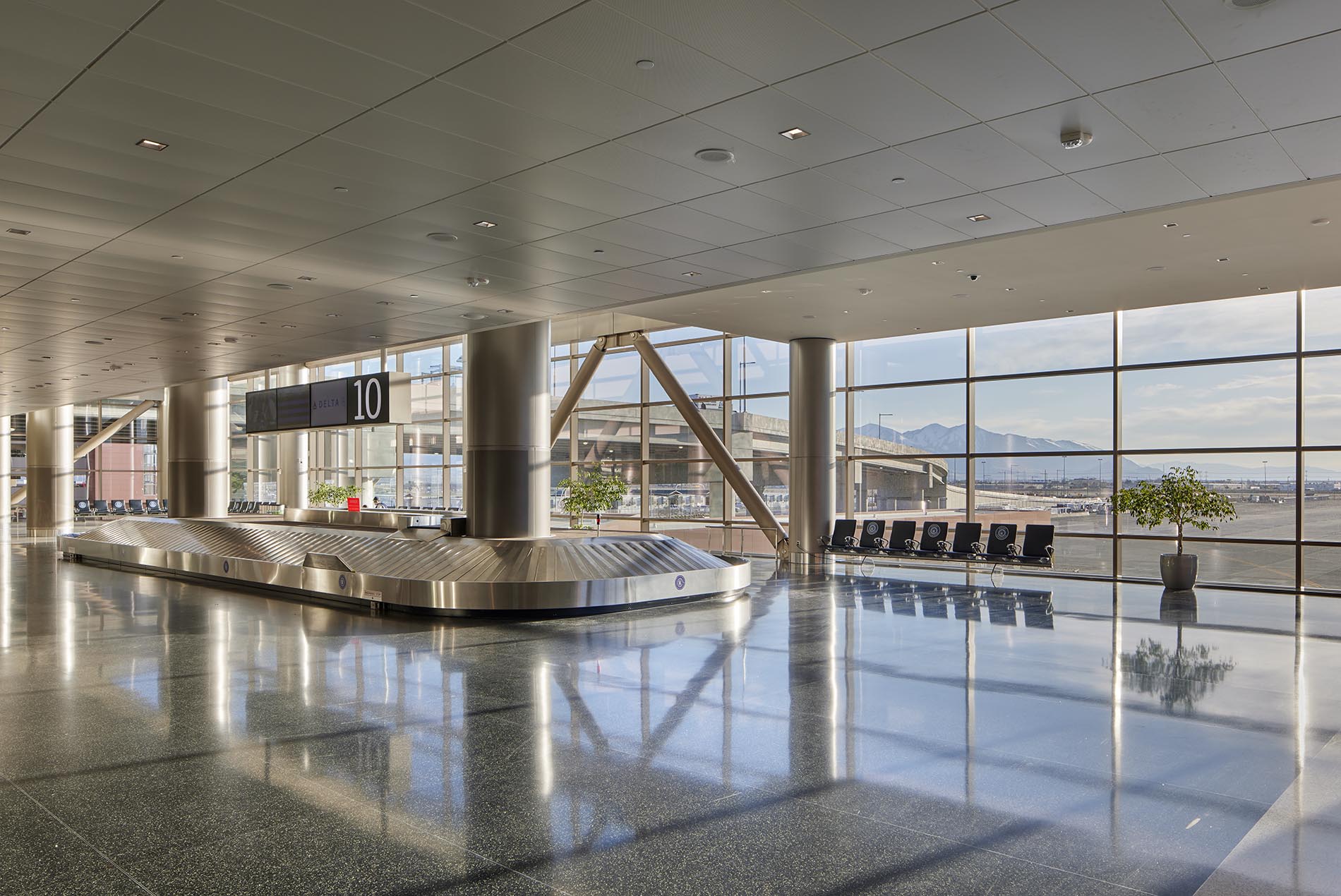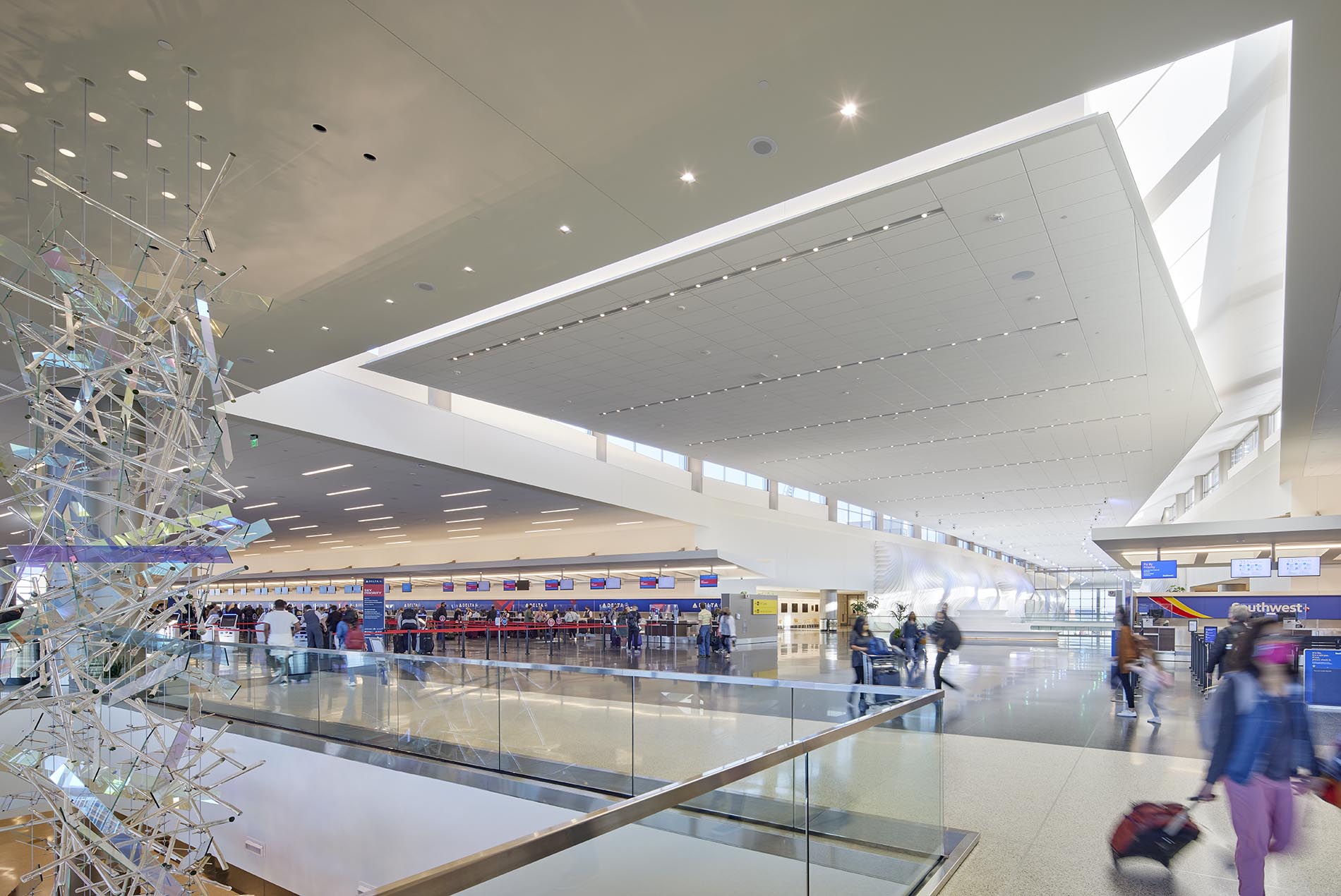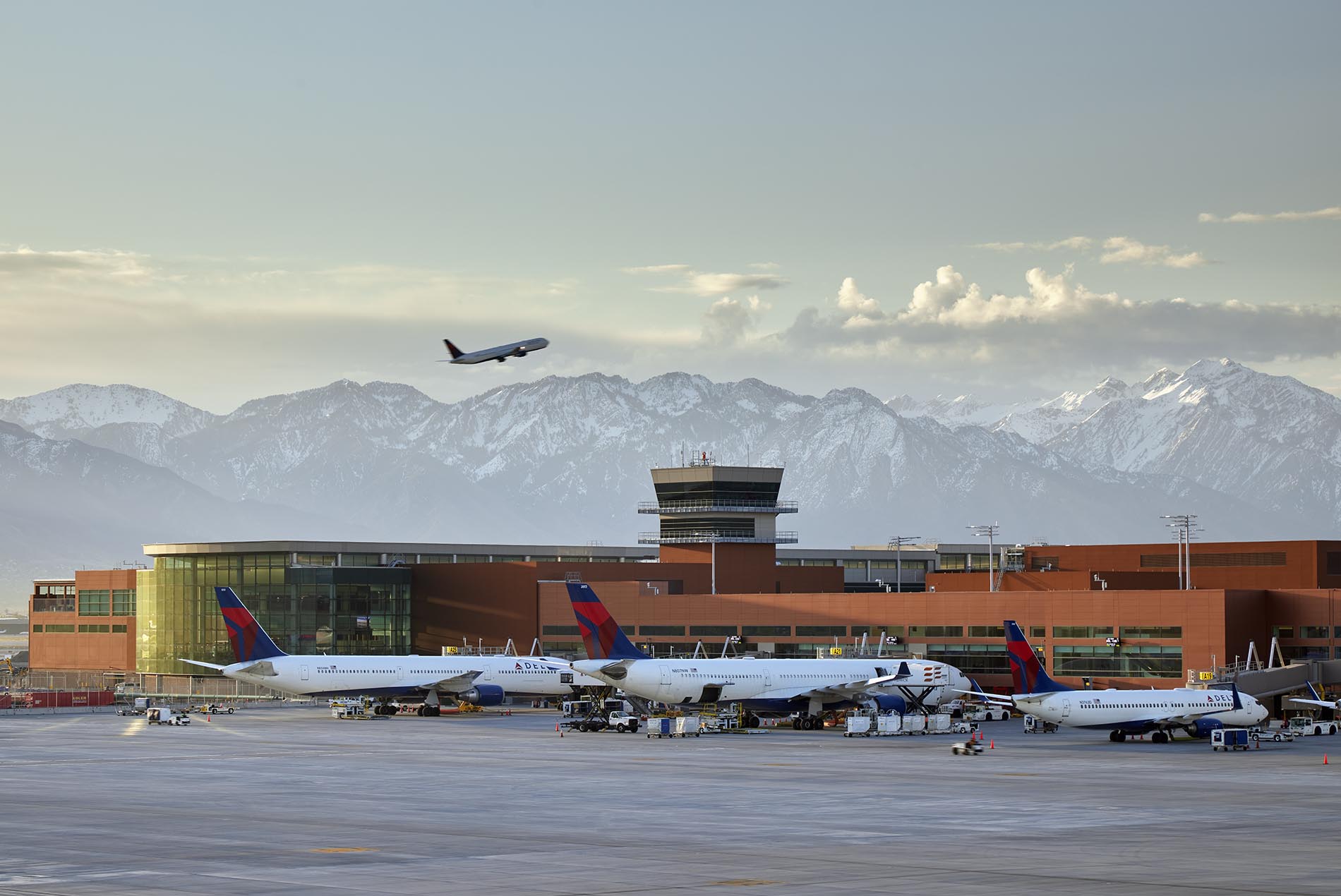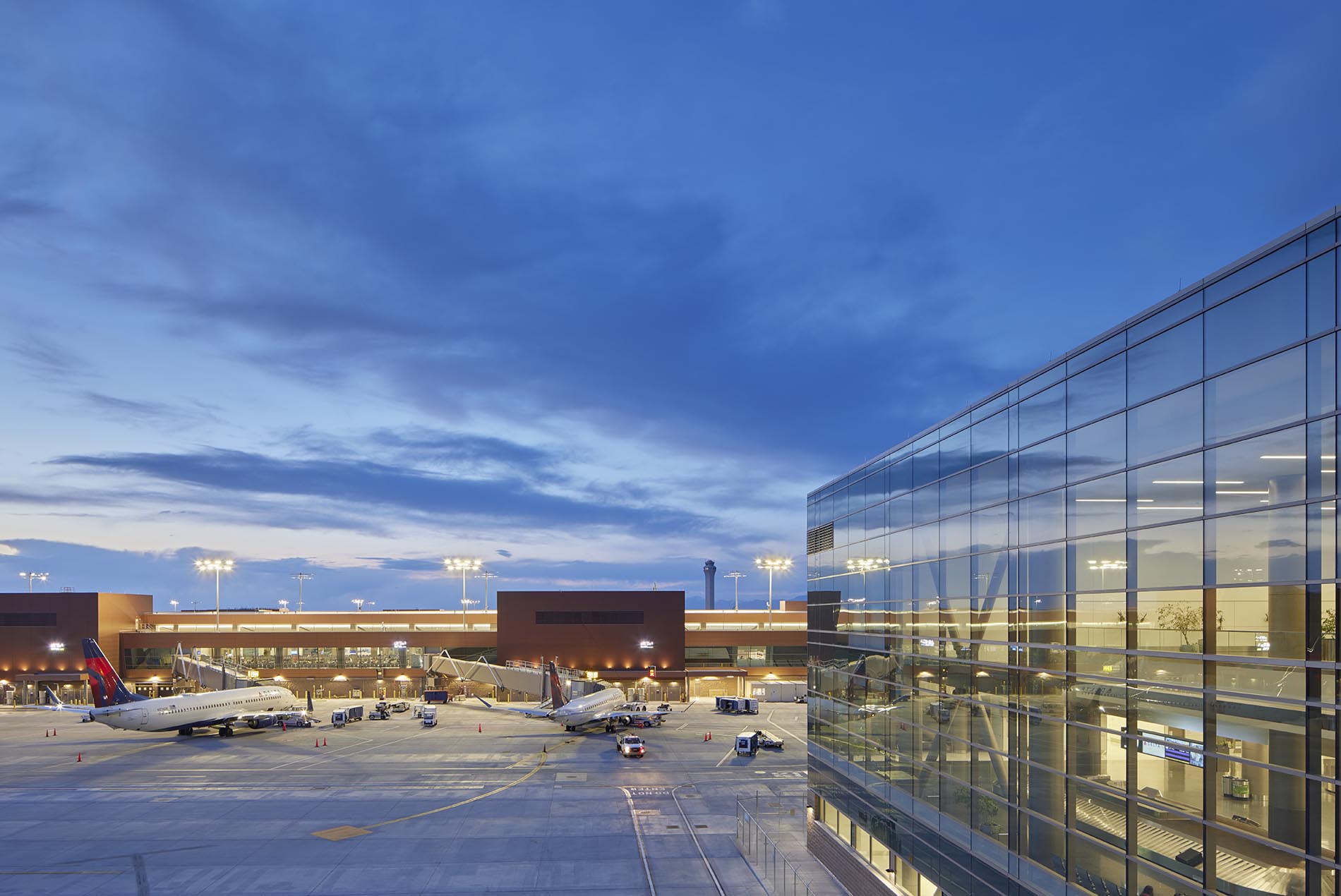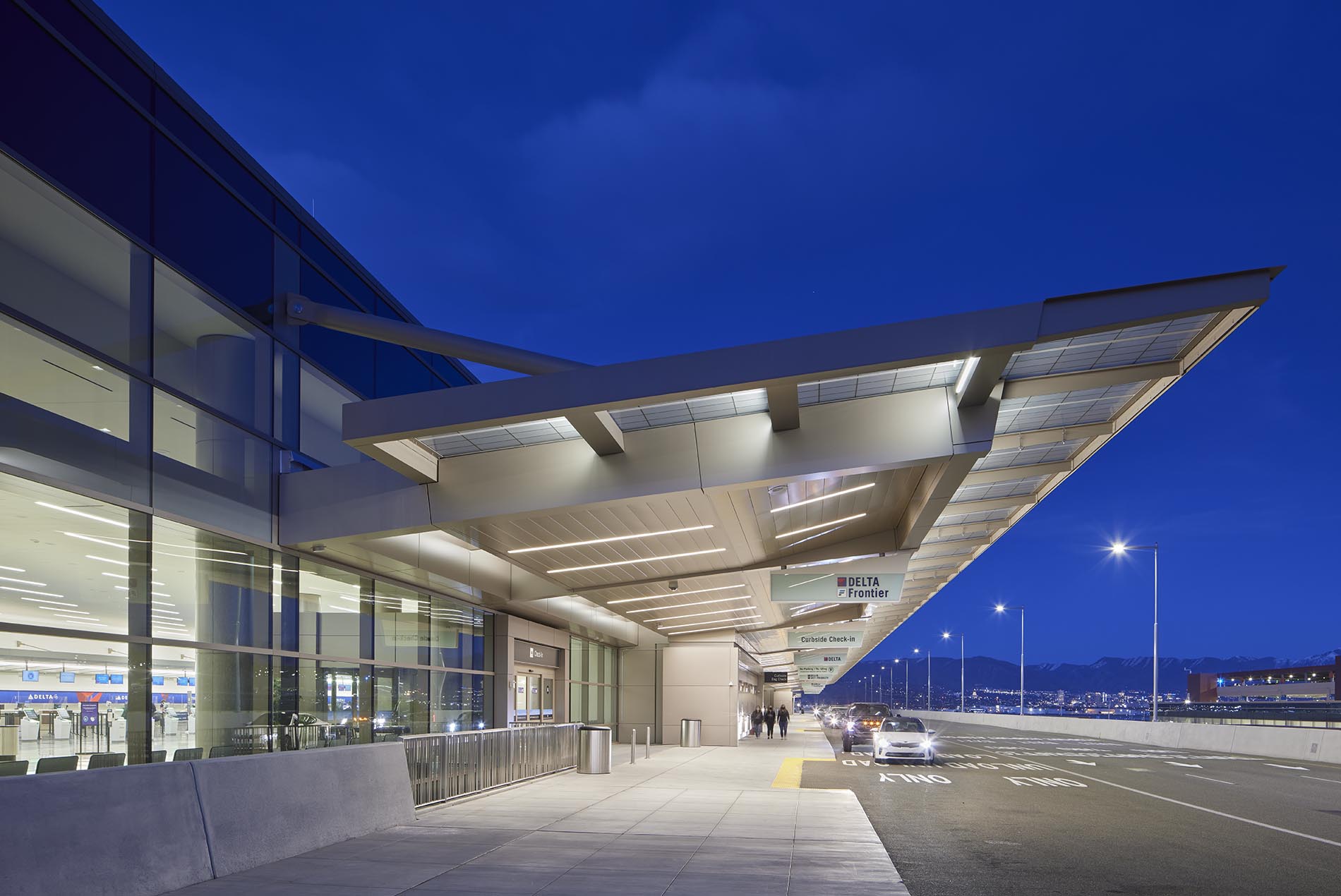After two decades of planning and six years of construction, the new Salt Lake City International Airport opened in 2020 to replace three aging terminals from the 1950s and 1960s.
The state-of-the-art, $4.1 billion facility stands on the same site. It’s the largest public works project in Utah’s history and the first new U.S. hub airport in the 21st century.
The first phase included a 909,000-sq.-ft. central terminal building alongside two linear concourses. Concourse A stretches 3,700 feet, while Concourse B extends 3,400 feet, together housing 45 new gates. A nearly 1,000-foot-long passenger tunnel links these concourses.
The second phase, completed in 2023, involved demolishing existing structures and completing the east portion of Concourse A. The third phase, centered on the new Central Tunnel connecting Concourses A and B, opened in fall 2024. The fourth and final phase, scheduled for completion in 2026, will add 16 gates to the eastern portion of Concourse B, bringing the total number of gates to 94.
“We’re changing the entire physical model of the airport,” said Executive Director Bill Wyatt. “The new terminal is so much more efficient for aircraft and passengers … it’s just a stunningly beautiful and functional facility.”
HOK’s design celebrates Utah’s natural beauty and reputation as an outdoor recreation hub. The light-filled terminal has 50-foot floor-to-ceiling glass walls that draw in daylight while providing expansive views of the airfield and Wasatch Mountains. Earth-toned, naturally derived interior and exterior finishes further connect passengers to Salt Lake City’s unique western locale. Local dining and retail options ensure that the airport is an extension of the overall Utah experience. Throughout the facility, HOK’s Experience Design team created branding and wayfinding systems that express the region’s adventurous spirit while guiding travelers through the airport.
At the heart of the terminal is “The Canyon,” an interior atrium spanning the length of a football field. This focal point houses security screening areas, shopping, and dining outlets. Artist Gordon Huether created a 362-foot-long, wavy sculpture made of more than 520 tensile membrane ‘fins’ that define the walls. The design reflects Utah’s dramatic red rock canyons, alpine peaks and flowing water.
Other features that improve the passenger experience include:
- The Greeting Room: A large area that accommodates up to 400 people with a welcoming fireplace where friends and family members can meet arriving passengers.
- Amenities like a ski drop support the region’s outdoor tourism.
- Twenty high-tech security screening lanes process travelers up to 30 percent faster.
- A new 3,600-stall parking garage offers twice the number of spaces and uses camera-based sensors to indicate open spots. Passengers can check bags in garage kiosks.
- Travelers can find electronic plug-ins at every seat and in open seating areas throughout the airport.
- A 28,000-sq.-ft. Delta Sky Club that is one of the carrier’s largest in the world; the new South Terminal is Delta’s fourth-largest hub.
The project has achieved LEED Gold certification. Sustainable design strategies minimize the airport’s environmental footprint through high-performance glazing, daylighting, and energy-efficient mechanical and lighting systems. The efficient configuration of terminals and gates reduces fuel use and aircraft emissions.
As master engineer on the project, HOK has provided mechanical, electrical, plumbing, structural, IT and security services. Due to the airport’s proximity to the Wasatch Fault, the engineering team designed the structures to be resilient and seismically safe against earthquakes. The team also factored in extreme weather conditions that the airport experiences throughout the seasons. To address these engineering challenges, the team designed 29 structurally independent buildings that appear as one cohesive terminal. This innovative design approach supports thermal movements for the buildings during extreme heat and cold conditions while maintaining the structural integrity against seismic conditions.
Working with construction managers HDJV and AOJV, the team found innovative economies of scale in design, specification and construction. The dramatic global slowdown in air travel due to the COVID-19 pandemic allowed the team to accelerate completion of the second phase by six months, saving millions of dollars.
With a capacity for 34 million passengers per year, the new airport positions Salt Lake City for economic growth as an increasingly popular destination for tourism and business.
